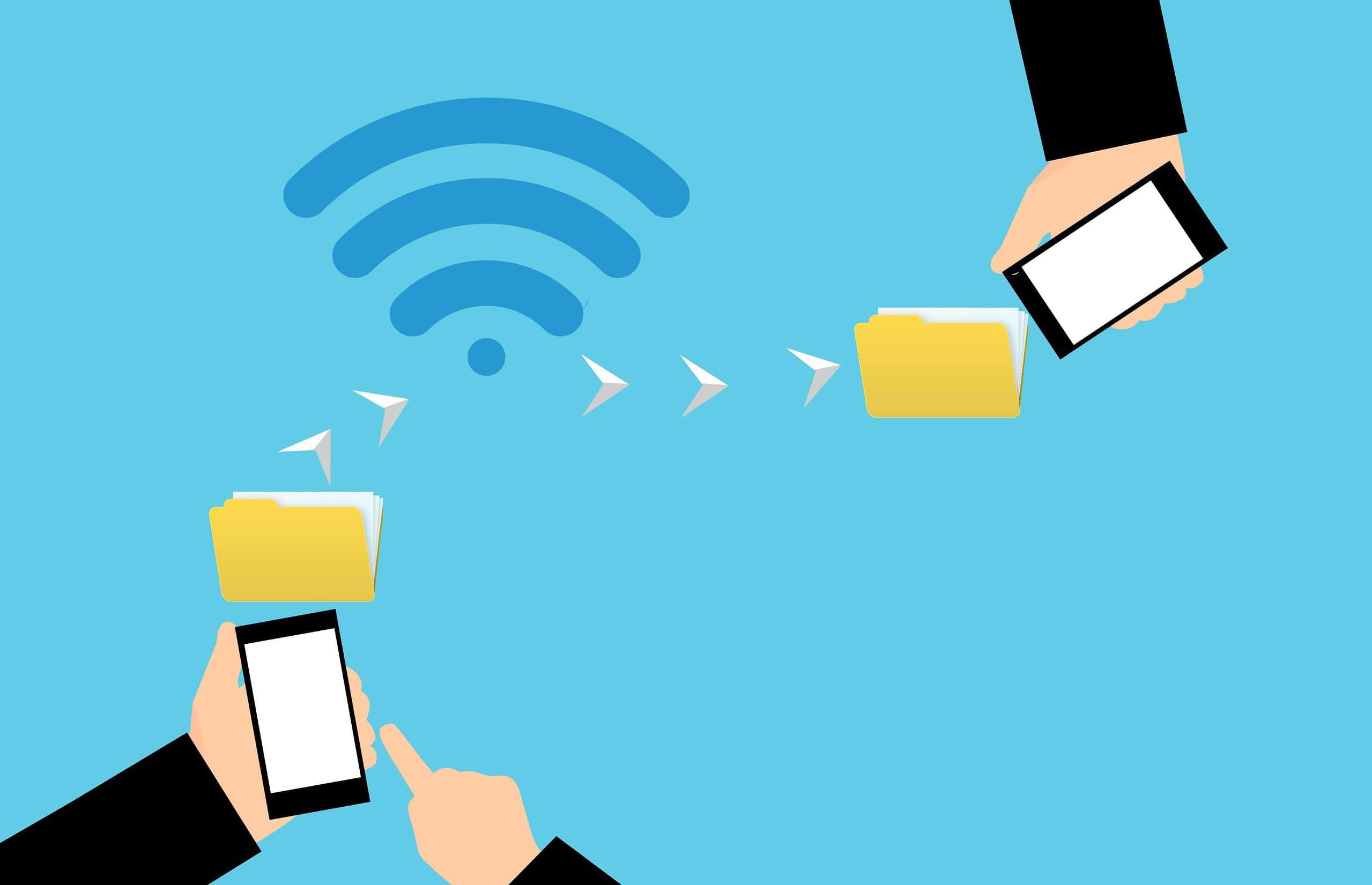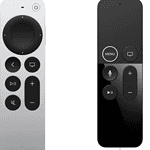Transferring files from your iPhone to your PC doesn’t have to be a hassle. With the right methods, you can easily move photos, videos, and documents between devices. You can transfer files from your iPhone to your Windows PC using AirDrop, iCloud, a USB cable, or third-party apps.
These options offer flexibility based on your needs and setup. Some methods work wirelessly, while others require a physical connection. You can choose the best approach for your situation, whether you’re moving a few photos or backing up large video files.
Let’s explore the main ways to transfer files from your iPhone to your PC:
| Method | Connection | Speed | Ease of Use |
|---|---|---|---|
| USB Cable | Wired | Fast | Easy |
| AirDrop | Wireless | Medium | Very Easy |
| iCloud | Wireless | Slow | Easy |
| Third-Party Apps | Varies | Varies | Moderate |
Transferring Files from Your iPhone to Your PC
Need to move files between your iPhone and PC? Whether it’s photos, videos, music, or documents, there are several ways to transfer files:
1. Using the File Explorer
This is a straightforward method for transferring files:
- Connect Your iPhone: Use a USB cable to connect your iPhone to your PC.
- Unlock Your iPhone: Unlock your iPhone and tap “Trust” if prompted.
- Open File Explorer: On your PC, open File Explorer.
- Locate Your iPhone: Your iPhone should appear in the sidebar under “This PC.”
- Access and Transfer Files: Click on your iPhone to browse its internal storage and DCIM folder (for photos and videos). Drag and drop the files you want to transfer to a folder on your PC.
2. iCloud Photos
If you use iCloud Photos, your photos and videos are automatically synced to iCloud and can be accessed on your PC.
- Enable iCloud Photos: On your iPhone, go to Settings > [Your Name] > iCloud > Photos and turn on iCloud Photos.
- Download iCloud for Windows: On your PC, download and install iCloud for Windows from the Apple website.
- Sign in to iCloud: Open iCloud for Windows and sign in with your Apple ID.
- Enable Photos: Select Photos and click Options to choose how you want to sync photos and videos.
- Access Photos: Your photos and videos will be available in the iCloud Photos folder in File Explorer.
3. iCloud Drive
iCloud Drive lets you store and access files in the cloud, making them available on both your iPhone and PC.
- Enable iCloud Drive: On your iPhone, go to Settings > [Your Name] > iCloud and turn on iCloud Drive.
- Access iCloud Drive on PC: You can access iCloud Drive through the iCloud for Windows app or by logging into iCloud.com in your web browser.
4. AirDrop
For quick wireless transfers between Apple devices:
- Enable AirDrop: On both your iPhone and PC (if it’s a Mac), turn on AirDrop and set the discovery settings to “Everyone” or “Contacts Only.”
- Share the File: On your iPhone, select the file you want to transfer and tap the Share button. Choose AirDrop and select your PC from the list of available devices.
- Accept the File: On your PC, accept the AirDrop transfer.
5. Third-Party Cloud Storage
Services like Google Drive, Dropbox, and Microsoft OneDrive offer apps for both iPhone and PC, allowing you to easily transfer files.
- Install the App: Install the cloud storage app on both your iPhone and PC.
- Upload and Download: Upload the files from your iPhone to the cloud storage service, then download them to your PC.
By using these methods, you can effectively transfer files between your iPhone and PC for easy access and management.
Preparing Your iPhone and PC for Transfer
Before transferring files from your iPhone to your PC, you need to set up both devices properly. This involves checking software compatibility, connecting them securely, and establishing trust between the devices.
Ensuring Software Compatibility
To transfer files smoothly, make sure your iPhone’s iOS and PC’s Windows are up to date. Check for updates on both devices:
On iPhone:
- Go to Settings > General > Software Update
- Install any available updates
On Windows PC:
- Click Start > Settings > Update & Security
- Select “Check for updates”
- Install pending updates
For seamless file transfers, install iTunes or the Apple Devices app on your Windows PC. These apps help manage your iPhone’s content and enable easy file syncing.
Connecting Devices with USB Cable
A reliable USB connection is crucial for file transfer. Follow these steps:
- Use the original Apple USB cable or a certified third-party cable
- Plug the USB end into your PC
- Connect the Lightning end to your iPhone
Ensure the cable fits snugly in both ports. If your PC doesn’t recognize the iPhone, try different USB ports or restart both devices.
Trust This Computer?
When you connect your iPhone to a new PC, a “Trust This Computer?” prompt appears. This security measure protects your data. To proceed:
- Unlock your iPhone
- Tap “Trust” on the pop-up
- Enter your passcode if prompted
This action allows your PC to access your iPhone’s files and data. You only need to do this once per computer. If the prompt doesn’t appear, try disconnecting and reconnecting your iPhone.
| Device | Action | Purpose |
|---|---|---|
| iPhone | Update iOS | Ensure compatibility |
| PC | Update Windows | Optimize connection |
| PC | Install iTunes/Apple Devices app | Enable file management |
| Both | Use certified USB cable | Secure connection |
| iPhone | Trust computer | Grant access to files |
Using iCloud for File Transfer
iCloud offers a seamless way to transfer files between your iPhone and PC. This cloud-based solution syncs your data across devices automatically and provides easy access to your files from anywhere.
Setting Up iCloud on iPhone
To start using iCloud for file transfers, set it up on your iPhone first. Go to Settings and tap your name at the top. Select iCloud and turn on iCloud Drive. Choose which apps you want to sync with iCloud.
Next, open the Files app on your iPhone. Tap Browse, then iCloud Drive. Here you can create folders and organize your files. To upload a file, tap the three-dot menu and select Upload.
iCloud gives you 5GB of free storage. If you need more space, you can upgrade your plan. Paid plans start at 50GB and go up to 2TB.
Syncing Files to iCloud Drive
Once set up, iCloud Drive automatically syncs files across your devices. To manually upload a file:
- Open the Files app
- Tap Browse, then iCloud Drive
- Tap the plus icon
- Select Upload Files or Create New Folder
You can also share files directly from other apps. Look for the Share button and choose Save to Files. Then select iCloud Drive as the destination.
| File Type | Auto-Sync | Manual Upload |
|---|---|---|
| Photos | Yes | Yes |
| Documents | Yes | Yes |
| Videos | No | Yes |
Accessing iCloud Files on a PC
To access your iCloud files on a PC, you need to set up iCloud for Windows. Download and install the iCloud app from the Microsoft Store. Sign in with your Apple ID.
Once installed, open File Explorer. You’ll see iCloud Drive in the sidebar. Your files will appear here automatically. You can drag and drop files to upload or download them.
For web access, go to icloud.com and sign in. Click on iCloud Drive to view and manage your files from any browser.
Direct Transfer Methods
Transferring files from your iPhone to PC can be done through several direct methods. These approaches offer straightforward ways to move your data without relying on cloud services or third-party apps.
iTunes File Sharing
iTunes File Sharing allows you to transfer files between your iPhone and computer. This method works well for documents and other non-media files.
To use iTunes File Sharing:
- Connect your iPhone to your PC with a USB cable
- Open iTunes on your computer
- Select your device when it appears in iTunes
- Click on “File Sharing” in the left sidebar
- Choose an app from the list to see its sharable files
- Select the files you want to transfer
- Click “Save to” and pick a destination on your PC
This process works for apps that support file sharing. Not all apps allow this feature.
Importing Photos via Photos App
The Photos app on Windows offers an easy way to import photos and videos from your iPhone. This method is ideal for transferring media files.
To import photos:
- Connect your iPhone to your PC with a USB cable
- Open the Photos app on your Windows PC
- Click “Import” in the top-right corner
- Select “From a USB device”
- Choose the photos or videos you want to import
- Click “Import selected”
Your selected media will transfer to your PC’s Pictures folder by default. You can change this location in the Photos app settings.
Using File Server or External Storage Device
For larger file transfers or when you need more flexibility, you can use a file server or external storage device. This method works well for transferring various file types.
To use this method:
- Connect your external storage device to your iPhone using a compatible adapter
- Open the Files app on your iPhone
- Locate the files you want to transfer
- Select the files and tap “Move” or “Copy”
- Choose your external storage as the destination
Once transferred, connect the external storage to your PC to access the files. For file servers, ensure both your iPhone and PC are connected to the same network. Then, you can access the shared files through your PC’s file explorer.
| Method | Best For | Pros | Cons |
|---|---|---|---|
| iTunes File Sharing | Documents, app files | Direct transfer, no internet needed | Limited to compatible apps |
| Photos App | Photos and videos | Easy to use, automatic organization | Only for media files |
| External Storage/File Server | Large files, various types | Flexible, works offline | Requires additional hardware |
Wireless Transfer Options
Several methods allow you to transfer files from your iPhone to PC without cables. These options offer convenience and flexibility for moving data between devices.
AirDrop to Mac and Then to PC
AirDrop provides a quick way to transfer files wirelessly from your iPhone to a Mac. Once on the Mac, you can then move files to your PC. To use AirDrop:
- Enable Wi-Fi and Bluetooth on your iPhone and Mac
- Open Control Center on your iPhone
- Tap AirDrop and set it to “Everyone” or “Contacts Only”
- Select the files you want to share
- Tap the Share button and choose your Mac as the recipient
After the files arrive on your Mac, transfer them to your PC using a USB drive or network sharing. This method works well if you have both a Mac and PC available.
Cloud Storage Services
Cloud storage offers a simple way to move files between devices. Popular options include:
| Service | Free Storage | File Size Limit |
|---|---|---|
| iCloud | 5 GB | 50 GB |
| Google Drive | 15 GB | 5 TB |
| Dropbox | 2 GB | 2 GB (free plan) |
To use cloud storage:
- Install the service’s app on your iPhone
- Upload files from your iPhone to the cloud
- Access the files on your PC through a web browser or desktop app
This method allows easy access to your files from any device with an internet connection.
Wi-Fi Transfer Apps
Dedicated apps enable direct Wi-Fi file transfers between your iPhone and PC. These apps create a temporary connection between devices on the same network.
To use a Wi-Fi transfer app:
- Install the app on both your iPhone and PC
- Connect both devices to the same Wi-Fi network
- Open the app on both devices
- Select files on your iPhone and send them to your PC
These apps often offer a simple interface and quick transfers for large files. Some popular options include Send Anywhere and Documents by Readdle.
Frequently Asked Questions
Transferring files from an iPhone to a PC can be done through various methods. Each approach offers unique benefits depending on your specific needs and available resources.
What methods are available for transferring files from an iPhone to a PC without using iTunes?
You can use the Photos app or File Explorer on Windows to transfer files without iTunes. Cloud services like iCloud, Google Drive, or Dropbox also offer easy file transfer options. These methods provide flexibility and don’t require additional software installation.
How can I wirelessly transfer files from my iPhone to my PC?
AirDrop is an option for Mac users. For Windows, you can use cloud services or third-party apps designed for wireless file transfer. These wireless methods offer convenience but may be slower than wired transfers for large files.
What are the steps to transfer files from an iPhone to a PC using a USB connection?
To transfer files via USB:
- Connect your iPhone to your PC with a USB cable.
- Unlock your iPhone and trust the computer if prompted.
- Open File Explorer on your PC.
- Find your iPhone under “This PC” or “Computer”.
- Browse the iPhone’s folders and copy files to your PC.
Can I use Bluetooth to transfer files from my iPhone to a PC, and if so, how?
Bluetooth file transfer is not natively supported between iPhones and PCs. You’ll need to use alternative methods like USB, Wi-Fi, or cloud services for file transfers.
Is there a way to move large files from an iPhone to a PC without facing file size limitations?
For large files, a direct USB connection is often the best choice. Cloud services may have storage limits or slow upload speeds. Some third-party apps specialize in large file transfers and can be an effective solution.
What free solutions exist for transferring files from an iPhone to a PC efficiently?
Free options include:
- iCloud (with limited storage)
- Google Drive
- Dropbox (with storage limits)
- Windows Photos app
- Email (for smaller files)
| Method | Speed | Cost | File Size Limit |
|---|---|---|---|
| USB | Fast | Free | None |
| iCloud | Varies | Free/Paid | 5GB free |
| Slow | Free | Usually 25MB |
These free methods offer different advantages. Choose based on your file sizes and transfer frequency.







